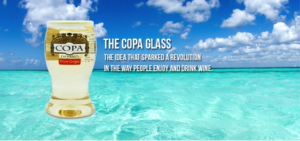
A few months back, Mary Kay’s CMO Sheryl Adkins-Green won The 2013 CMO Award for Officers given by The CMO Club. This award, according to Pete Krainik, founder of The CMO Club,”was based on a marketing executive’s demonstrated leadership in leading the brand beyond the marketing department and leading the growth agenda for the company.” When you read the interview below I think you will understand not only why Sheryl won this award but also why Mary Kay represents such a distinctive marketing challenge.
Founded just over 50 years ago, Mary Kay depends on independent army of beauty consultants that is now 3 million strong. For Sheryl, marketing is less about driving demand from end users and more about motivating their consultants to champion Mary Kay products all over the world. Doing this requires genuine insights into the dreams and aspirations of these women who have the potential to transform their own lives AND to make a huge difference in the lives of others. Connecting with their beauty consultants on a highly emotional and personal level has created a culture that’s become the lifeblood of the company. Read on as Adkins-Green highlights Mary Kay’s unique marketing strategy and her most successful campaigns:
Drew: A challenge that a lot of CMOs face is: where do you spend your time? How do you know where to spend it, and has that changed at all over the last couple years?
I find that my time is best spent with our customers and my team. Ideas and the success of their implementation come from that time spent. I don’t feel like that has changed substantially. I’m also spending more time exploring all the new developments that are expanding digital marketing options – and the trends regarding how consumers are using social media channels and mobile apps. These are areas where, out of necessity, I have been investing more time.
Drew: Let’s break down the time that you spend with customers. Your first round of customers, we could say, are the folks that your 3 million Independent Beauty Consultants. The Mary Kay Independent Beauty Consultants really define the brand for many customers. Do you spend time with both them and the end user?
Actually, the Mary Kay Independent Sales Force is our only customer, and to your point, they in turn have a customer base. I connect with the independent sales force in larger forums such as our annual Leadership and Seminar events. When I travel to international markets, I also attend sales events and solicit suggestions from the Independent Sales Force. We also include the Independent Sales Force in any research that we’re doing on major new products and new promotion concepts. I’m also “listening” to the independent sales force via our social media channels. In addition, we have an intranet where we’re receiving input from the independent sales force. Certainly, on the public social channels such as Twitter, Instagram, and Pinterest, we’re in touch with what they’re interested in, what they are talking about, etc.
Drew: You brought up social media; in one case on your Facebook page, there were more shares than likes, which is very unusual for a particular post. Would you say that a large percentage of those fans are your consultants?
Certainly a large percentage are Mary Kay Independent Beauty Consultants, but the total metrics and the types of engagement indicate that it is a combination of both Independent Beauty Consultants AND their customers who love the products. Our fan base is made up of women who love Mary Kay products, what the company is doing in the community, and also women love their Mary Kay beauty consultants! It’s definitely a combination.
Drew: For other brands, the concept of employees-as-brand-ambassadors has been very difficult to manage. At Mary Kay, the Independent Sales Force are the brand ambassadors. The role that social media plays for them is somewhat different; it’s an educational channel as well as a marketing channel for them, because they can share your content with their friends who presumably are also their customers. How do you manage that?
That is exactly our goal: to make it easy for them to access and share relevant brand content that supports the success of their business. We definitely provide a best practices example and make sure that the content we provide is timely to new product launches—we incorporate what’s trending in the beauty world, whether it’s the holiday season, the Oscars, how-to tips, etc.—and then we make it very easy for them to share. We have what we internally refer to as a “digital zone,” where we aggregate the digital content so that it’s easy to access and share.
Drew: One of the issues other companies have is compliance. In this case, it’s getting the Mary Kay Independent Beauty Consultants to actually use this intranet, so you end up having to market the marketing. How do you make sure that your consultants spend a little time on marketing versus spending all their time in the field?
We work to make sure the content is easily accessible. The goal is not to encourage them to spend a lot of time at their desk, but to have it available, as they need it, when they need it.
Drew: How do you manage your overall marketing, recognizing that success and failure are almost always determined by that Independent Beauty Consultant?
It really ties back to the strong values that Mary Kay Ash herself built into the company and into the culture. It’s something that’s literally been embraced by the Independent Beauty Consultants who’ve decided to start a Mary Kay business. Those values are around the Golden Rule, and treating people the way you want to be treated. It’s what we call “Golden Rule Service,” providing the kind of service that we would want for ourselves. When you ask how we manage the customer experience that individuals might have, I really credit the value system and the Independent Beauty Consultants’ commitment to those values. It’s something that’s shared and reinforced in how the company interacts with the Independent Sales Force, and then reflected in how they interact with their customer base.
Drew: Mary Kay as a company does not recruit or hire the Independent Beauty Consultants. Because the Mary Kay brand is in their hands, it is important that Independent Beauty Consultants share the company’s values. Is there a screening process that ensures a higher likelihood of signing an agreement with someone who has those shared values?
The culture is so strong, and this might be an oversimplification, but as it relates to the value system, like attracts like. In other words, the women who typically have interacted with an Independent Mary Kay Beauty Consultant have learned about more than the great products. They have learned about what the company is doing in the community. There are core values that resonate in regards to how the Mary Kay brand and opportunity are really about more than just cosmetics. It’s about empowering women, helping them discover their inner beauty, their confidence, their passion and their special gifts through the opportunity. There are typically meetings and discussions that the Independent Beauty Consultants and Directors would have with someone as they are considering this opportunity. It’s not a screening process per se, but there are conversations that help women understand the company’s culture and values as they are considering the Mary Kay opportunity.
Drew: Let’s get to specific marketing programs that you’ve done over the last three years where you were really proud of the results.
There have been a couple; the first took place in 2013. It was a campaign that was developed to commemorate our 50th anniversary, and our mantra for the anniversary year was “One Woman Can.” It not only paid homage to the accomplishments of Mary Kay Ash, but it also represented our empowerment message. One woman can do amazing things, and one woman can do anything that she sets her desires on. The marketing program, specifically, was centered on a global makeover contest. It kicked off on March 8th, which was International Women’s Day. Our goal was to complete the highest number of makeovers ever, and we did complete 44,000 makeovers within a 24-hour period. Earlier this month, Mary Kay Independent Beauty Consultants and their customers actually beat this record by completing 58,808 makeovers!
By engaging the Independent Sales Force all around the world, it kicked off a global contest where women not only participated in makeovers and agreed to have their picture posted in a gallery, but more importantly they had an opportunity to tell a story about a cause that they cared about. The winners of the contest also had an opportunity to win a grant for the charity or not-for-profit of their choice. The specifics varied a little bit, but in the United States, the company awarded 50 5,000 grants on behalf of the 50 women who received the most votes in the “One Woman Can” makeover contest. Mary Kay Ash started her company with her life’s savings of $5,000. This anniversary marketing initiative, therefore, celebrated what Mary Kay is about—inner beauty showing through as outer beauty. It was an opportunity to engage the Independent Sales Force not only with their current customers but also to connect with potential new customers. A lot of women shared that they typically wouldn’t be interested in a makeover, but because there was an opportunity to support a cause that they care about and possibly earn a grant, then they would be willing to lend their faces.
Drew: How did you promote this program?
We promoted it via social media. The Independent Sales Force outreach and PR coverage was a great way to tell the story to the media. We did get some great offline and online TV coverage that provided the opportunity to share our “One Woman Can” anniversary message and convey why we were celebrating with a makeover contest that was anchored by inner beauty.
Drew: Other than posts on Facebook and Twitter, could you enter via social channels?
Yes. The information on how to enter you could access through social channels, but you needed to enter through an Independent Beauty Consultant. If you didn’t have a consultant, we directed women to the consultant locator on www.marykay.com—you could enter your zip code and find an Independent Beauty Consultant in your area. That’s the way new customers were able to connect to the sales force.
Drew: How do you evaluate the success of your marketing?
We used several metrics. As a leading indicator, we were able to track our sales to the Independent Sales Force; that’s just one element. We were also able to track our social media metrics. We also have annual surveys of the Independent Sales Force to understand not only this type of marketing program, but in general how well our initiatives are supporting their businesses, and if there are any gaps or opportunities, what those are so that we can address them.
Drew: When you sit down with your CEO, how do you frame the role of marketing?
I frame it in the context of supporting the success of the Independent Sales Force. For example, when I talk to the CEO about social media initiatives, I don’t talk in terms of likes or fans but in the context of how social media engagement is driving awareness, consideration and trial of brand, since these activities support the Independent Sales Force. Just as you noticed some of our engagement numbers—we look at how the social media programs drive traffic to the website, to shopping pages, and the consultant locator. Our most compelling metrics are the ones that tie to the success of the Independent Sales Force.
Drew: You mentioned you have a global audience and it’s growing. As a CMO, how do you get to know these international markets?
My team and I spend as much time as possible with our international markets through our organizational structure, working with regional- and country-level marketing teams. It starts with a clear and consistent strategy from which the different marketing teams are able to develop their plans. They start with corporate strategy and programs but have leeway to be locally relevant.
Drew: Have you had to make product adjustments for markets outside the U.S.?
Yes. First and foremost, any regulatory requirements are going to be factored in. For example, in the Asia Pacific market, the skincare category is larger for beauty brands, so we do offer more skincare regimens in this market than in other parts of the world. In Latin America, where fragrances are a very highly developed beauty category, we offer more fragrances that have been specifically developed to deliver against preferences in Mexico and Brazil.
Drew: I love the 50th anniversary story—is there another initiative you would like to call to my attention from your portfolio as a CMO?
Another initiative is our college campus tours, which is actually in its third year. We call it “Fall Into Beauty,” and it’s been in partnership with Cosmopolitan and Seventeen Magazine. Importantly, beyond being an introductory beauty experience on college campuses, we have also partnered with a not-for-profit, LoveisRespect.org. Mary Kay has been the lead sponsor for their text support line. “Love is Respect” educates young women—more broadly, young adults—about healthy relationships. In a nutshell, the goal is to head off domestic violence before it begins. This organization targets younger women, and the text support line provides them with a confidential channel to ask questions either for themselves or on behalf of someone they care about and get advice on how to handle a situation, hopefully before it becomes abusive. They just need to text “loveis” to 77054. Our message on campus is about more than beauty—it’s about creating awareness about this service and about domestic violence in the hopes that young women who are away from home for the first time have the confidence to recognize and avoid unhealthy relationships, and help other young women do the same thing.
Drew: How do you evaluate the success of a program like that?
Specifically with “Love is Respect,” it is one of those things where, on the one hand, if you get a lot of comments and questions coming through that channel, you feel it’s good that those women had a place to go, but at the same time, part of you doesn’t want to see a high number because you feel like that might be indicative of a high number of women in a difficult situation. Our primary goal with “Love is Respect” is to create awareness and to disseminate that this help is available. The campus tour gave us an opportunity to get the word out about the text support line, leveraging the fact that college students are highly connected and can then pass that information on to those who would benefit from it.
Drew: I’ve read that interest in the Mary Kay opportunity is somewhat counter-cyclical—if the economy is bad, then more people are interested in running their own businesses. Does the cyclical nature of your business come into play as you think about your own marketing?
Yes, certainly. When economic times are challenging and when career opportunities are limited, we definitely see more people interested in the opportunity. Those who had a Mary Kay business part-time may decide to invest more time into it or even make it a full-time option. Having said that, the flip side is that when the economy is a little stronger and women are spending more money, it’s also good for the Independent Mary Kay sales force. When they are selling a great product and are part of a brand that’s doing great things in the community, that’s also appealing. From my vantage point, it’s always a good day to start a Mary Kay business. That’s how we approach the marketing. We always treat it as a new and exciting, rewarding opportunity.
Drew: Does content marketing play a role? Did you have any new initiatives in that area? Is that even relevant to your business?
On one level, I am more of an old-school marketer and I feel marketing has always been about the brand messages – not simply the advertising. Everything speaks – I’ve always marketed with that in mind. But more importantly, brands should always be about discovery. Content marketing is about creating and keeping a fresh face on your brand – everyday! Content marketing is about all levels of the customer experience with your brand—all touch points, telling a relevant and consistent story. I’ve always tried to do that on any brand or portfolio I was responsible for.
Drew: As the CMO, have you been able to address the entire customer experience?
I’ve been able to influence and impact a number of dimensions, but it is shared with other team members in Mary Kay that have a more direct responsibility in terms of customer service and the Independent Sales Force. The ultimate influencer is the Independent Beauty Consultant herself, and this is consistent with how Mary Kay began this business. We use our company principles and education to make the brand experience as relevant and consistent as possible around the world. I believe my team and I have been successful in leading the evolution of the overall Mary Kay Brand experience, but I have to say it does take a village!







